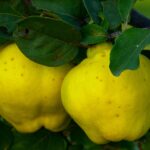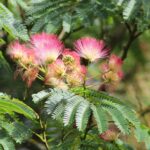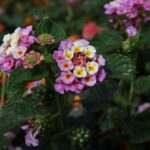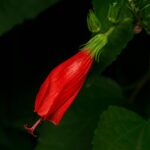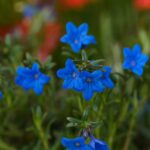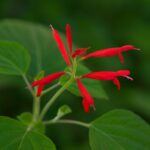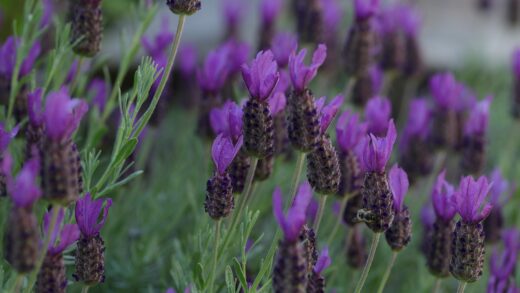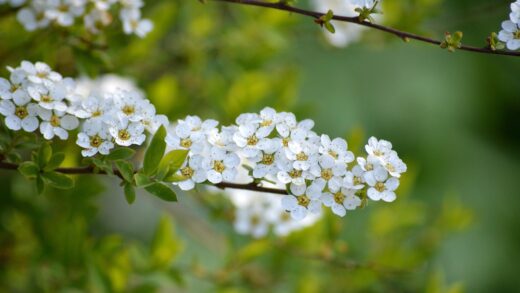The Balkan squill is a remarkably resilient and generally trouble-free plant, often gracing gardens for years with minimal intervention. However, like any plant, it is not entirely immune to the pressures of pests and diseases. While significant problems are infrequent, being aware of the potential issues can help a gardener to identify and address them promptly, ensuring the long-term health and vitality of their bulb colonies. Most problems that arise are directly linked to unfavorable growing conditions, particularly poor drainage and inadequate air circulation, which can create an environment where pathogens and pests can flourish.
The most significant threat to the health of the Balkan squill is not a pest or a disease in the conventional sense, but rather a cultural problem: bulb rot. This is a condition caused by various soil-borne fungi that thrive in cold, waterlogged conditions. When the bulbs are planted in heavy, poorly drained soil, they are highly susceptible to rotting, especially during their winter and summer dormancy periods. The symptoms are often not visible until it is too late, manifesting as a failure of the bulbs to emerge in the spring or the emergence of weak, yellowing shoots that quickly collapse. Prevention, through the provision of excellent drainage, is the only effective cure for this issue.
In terms of invertebrate pests, the Balkan squill is not a primary target for many common garden marauders. Slugs and snails, however, can sometimes cause damage, particularly in the spring. They are attracted to the tender new shoots and flower buds as they emerge from the soil. While minor grazing is usually just a cosmetic issue, a severe infestation can damage the growing tips and reduce the floral display. These pests are most active in damp, mild weather, so vigilance is required during these periods.
Other potential, though less common, pests include aphids, which may occasionally colonize the leaves and flower stems, and the narcissus bulb fly. The narcissus bulb fly, although primarily a pest of daffodils, can sometimes lay its eggs near other bulb species. The resulting larva then burrows into the bulb and feeds on its internal tissues, hollowing it out and killing the plant. While this is a rare occurrence in Balkan squill, it is a possibility to be aware of, especially if you also grow daffodils. Vigilant monitoring and the promotion of a healthy garden ecosystem are the best defenses against these potential threats.
Fungal diseases and rot
By far the most prevalent and serious issue affecting the Balkan squill is bulb rot, a condition primarily caused by fungal pathogens. This is not a single disease but rather a general term for the decay of the bulb caused by various fungi, most commonly from the Fusarium or Penicillium genera. These pathogens are ubiquitous in garden soils but typically only become problematic when the environmental conditions are favorable for their growth. The single most significant contributing factor to the development of bulb rot is excessive soil moisture combined with poor drainage.
More articles on this topic
The symptoms of bulb rot often go unnoticed until the plant fails to perform as expected. In the spring, affected bulbs may fail to emerge from the soil entirely. Alternatively, they might send up weak, stunted shoots that are yellowed and lack vigor. These shoots may collapse and die before they have a chance to flower. If you were to dig up a suspect bulb, you would find that it is soft, discolored, and mushy, often with a moldy growth on its surface. The basal plate, where the roots emerge, is frequently the first part of the bulb to succumb to the infection.
Prevention is unequivocally the most effective strategy for managing bulb rot, as there is no chemical cure for an already infected and decaying bulb. The key to prevention lies in providing the right growing conditions. This starts with planting the bulbs in a location with sharp, fast-draining soil. If your garden has heavy clay soil, it is essential to amend it with copious amounts of grit and organic matter to improve its structure and prevent winter waterlogging. Growing the bulbs in raised beds or on a slope can also be an effective way to ensure that excess water drains away quickly.
Careful handling of the bulbs is also important. Any nicks, bruises, or other physical damage to the bulb’s surface can create an entry point for fungal pathogens. For this reason, it is important to handle the bulbs gently during planting and division. Always discard any bulbs that feel soft or show signs of mold or damage at the time of purchase or planting. Ensuring that the bulbs have a dry dormant period during the summer is another critical preventative measure, as warm, wet conditions can also encourage the proliferation of rot-causing fungi.
Common invertebrate pests
While the Balkan squill is not a magnet for pests, there are a few common garden invertebrates that can occasionally cause problems. Slugs and snails are perhaps the most likely culprits, especially during the mild, damp weather of early spring. These molluscs are drawn to the tender new growth as it emerges from the soil. They can chew ragged holes in the leaves and may also feed on the delicate flower buds and petals, spoiling the aesthetic appeal of the display. In very severe cases, they can graze the shoots down to ground level, preventing the plant from flowering altogether.
More articles on this topic
Managing slugs and snails can be approached in several ways. Creating a less hospitable environment by removing potential hiding places like leaf litter and stones from around the plants can help. Barriers such as crushed eggshells, horticultural grit, or copper tape placed around the planting area can deter them. Biological controls, such as introducing nematodes that parasitize slugs, are a very effective and environmentally friendly option. Beer traps can also be used to lure and drown the pests. If necessary, slug pellets can be used, but it is best to choose a brand based on ferric phosphate, which is less harmful to wildlife than those containing metaldehyde.
Aphids are another potential pest, although they rarely cause significant damage to healthy Balkan squill plants. These small, sap-sucking insects may occasionally form colonies on the leaves or flower stalks, particularly if the plants are under stress. A heavy infestation can cause some distortion of the leaves and may lead to a sticky residue of honeydew, which can in turn attract sooty mold. However, in a healthy garden ecosystem, natural predators such as ladybirds, hoverfly larvae, and lacewings will usually keep aphid populations in check.
If an aphid infestation does become problematic, it can usually be controlled with simple, non-chemical methods. A strong jet of water from a hose or spray bottle is often sufficient to dislodge them from the plants. Alternatively, a dilute solution of soapy water can be sprayed directly onto the pests. For persistent problems, an insecticidal soap or a plant-oil-based spray can be used. It is always best to start with the least toxic control method and only escalate if absolutely necessary to protect the beneficial insects in your garden.
The narcissus bulb fly
A more serious, though thankfully less common, pest that can affect the Balkan squill is the narcissus bulb fly (Merodon equestris). As its name suggests, its primary host is the narcissus (daffodil), but it has been known to occasionally attack other spring-flowering bulbs, including Scilla. The adult fly itself is harmless, resembling a small, furry bumblebee, and is active on sunny days in late spring. The damage is caused entirely by its larva, which is a large, plump maggot that feeds on the inside of the bulb.
The adult female fly lays her eggs on the soil surface near the base of the bulb’s foliage as it begins to die back. When the egg hatches, the small larva burrows down into the soil and enters the bulb through the basal plate. Once inside, it spends the next several months feeding on the central core of the bulb, hollowing it out completely. The damage is all internal, so there are often no visible symptoms above ground during the autumn and winter. The problem only becomes apparent the following spring when the infested bulb either fails to produce any growth or sends up only a few weak, grass-like leaves with no flower.
Detection and control of the narcissus bulb fly can be challenging. If you suspect an infestation, you should lift the affected bulb and inspect it. An infested bulb will feel light or soft when squeezed, and you may be able to see the small entry hole in the basal plate. Cutting the bulb in half will reveal the large maggot inside, surrounded by a mess of dark, rotten tissue. Any infested bulbs should be destroyed immediately to prevent the larva from pupating in the soil and emerging as an adult fly to continue the cycle. Do not add infested bulbs to your compost heap.
Preventative measures are the most effective way to deal with this pest. After flowering, as the foliage begins to die down, it is a good idea to rake the soil surface around the bulbs. This can help to crush any eggs that have been laid and can disturb the emerging larvae, preventing them from finding the bulbs. Some gardeners also advocate covering the area with fleece or a fine mesh during the egg-laying period in late spring to prevent the female flies from accessing the soil. Maintaining a tidy garden and removing dying foliage promptly can also make the area less attractive to the flies.
Vertebrate pests and other issues
Beyond insects and diseases, certain vertebrate pests can sometimes cause problems for Balkan squill plantings. Rodents such as mice, voles, and squirrels can be a nuisance, particularly in the autumn after the bulbs have been planted. They are attracted to the bulbs as a food source and may dig them up and eat them or carry them away to store in their caches. This can be especially frustrating when you have just planted a large new drift of bulbs. Squirrels, in particular, are notorious for their curiosity and may dig up bulbs even if they do not intend to eat them.
To deter these foraging animals, there are several strategies you can employ. Laying a piece of chicken wire or mesh on top of the soil over the planting area can be very effective. The bulbs can grow up through the holes in the mesh, but the rodents are prevented from digging down to them. The mesh can be disguised with a light layer of mulch and removed in the spring if desired. Planting the bulbs slightly deeper than usual can also sometimes help to put them out of the reach of casual diggers. Some gardeners also have success with deterrents that have a strong smell, such as scattering cayenne pepper or commercial rodent repellents on the soil surface, although these need to be reapplied after rain.
Another potential issue is accidental damage caused by gardening activities. Because the bulbs are dormant and invisible for a large part of the year, it is easy to forget exactly where they are planted. This can lead to them being accidentally sliced by a spade or fork during autumn or winter digging, or damaged by the tines of a rake. To prevent this, it is essential to use clear and durable markers to indicate the location of your bulb colonies. This is particularly important for new plantings before they have had a chance to establish into a noticeable clump.
Finally, competition from more vigorous plants can be a problem. The Balkan squill is a small plant and can be easily overwhelmed by aggressive, spreading perennials or invasive weeds. These larger plants can crowd out the squill, competing for light, water, and nutrients, which can lead to a gradual decline in the bulb’s health and flowering performance. It is important to plant Balkan squill with appropriate companions that will not swamp them, and to be vigilant about removing any encroaching weeds or overly enthusiastic neighbors to ensure the bulbs have the space they need to thrive.







